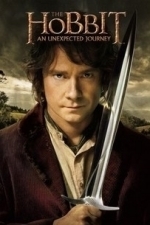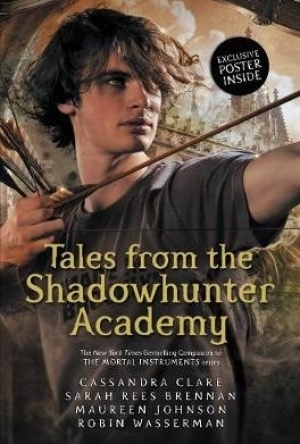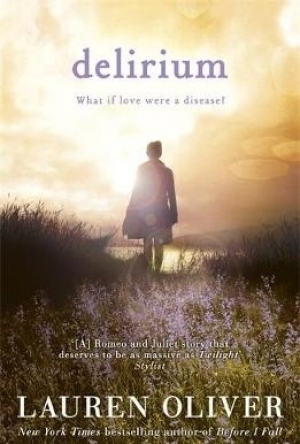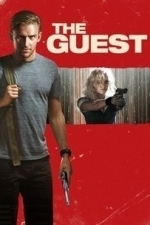Search
Search results

All Islamic Audio Stories Muslims Free
Book and Lifestyle
App
Get the largest collection of free All Islamic audio stories Muslims for your phone or tablet. Read...
Purple Phoenix Games (2266 KP) rated Rhino Hero in Tabletop Games
Jun 12, 2019
What’s that on top of that building? It’s a…..rhino? Yes – you’re not hallucinating! Your neighborhood caped-crusader is indeed none other than Rhino Hero! Although not necessarily the most nimble of superheroes, he always gives 100% when it comes to protecting his people!
Rhino Hero is a dexterity-based game of literal hand management in which players are trying to use their cards to build the tallest tower possible. In simple terms, picture a ‘Jenga’ of sorts mixed with building a house of cards – instead of removing lower tiles and adding them to the top, though, you’re just adding cards to the narrow tower in an attempt to build the highest possible building for our superhero to traverse! The game is very easy to learn, simple to play, and entertaining for all involved! Here’s how it works: All players start with a hand of 5 roof cards. Each player, on their turn, will first place wall cards (as indicated) on the previously played roof card. Once that is done, the active player will then choose a roof card from their hand to play on top of the newly ‘built’ walls. Play continues until either one player has played all of their roof cards, or until a player causes the tower to fall over! Dexterity is important – how steady can you keep your hand as you build the tower? But strategy is key too – some roof tiles allow players to take special actions (play an additional roof card, reverse turn order, etc.), so timing your use of these powers is essential to success! Do you have the steadiness and strategy necessary to help our Hero on his quest for justice? Or will you end up as the clumsy sidekick who ruins the plan?
I thoroughly enjoy playing Rhino Hero. It’s such a fun and lighthearted little game that I can’t help but smile every time I play! One reason it’s so great is that it is extremely simple to learn, teach, and play. Playing with new players? Try Rhino Hero. Playing with children? Try Rhino Hero. Need something short and light to play between big games? Try Rhino Hero. It’s just a nice breathe of fresh air and I am almost always down to give it a couple of plays!
Another reason why I like Rhino Hero is that it’s more than just a dexterity game. Yes, the brunt of this game is centered around carefully building the tallest tower possible, but the card abilities take it to the next level. It adds an element of strategy that keeps players engaged beyond just needing a steady hand. How can you use your cards to best benefit you, or best block your opponents? It all depends on your current roof cards, so every game can require a different strategy!
If you’re looking for a short, light game, I hope you’ll consider Rhino Hero. It’s not the most strategic or cut-throat game out there, but it will definitely keep you engaged until the end – with pumping adrenaline and shaky hands (for me, at least). Purple Phoenix Games gives Rhino Hero a rhinoriffic 16 / 24.
https://purplephoenixgames.wordpress.com/2019/05/09/rhino-hero-review/
Rhino Hero is a dexterity-based game of literal hand management in which players are trying to use their cards to build the tallest tower possible. In simple terms, picture a ‘Jenga’ of sorts mixed with building a house of cards – instead of removing lower tiles and adding them to the top, though, you’re just adding cards to the narrow tower in an attempt to build the highest possible building for our superhero to traverse! The game is very easy to learn, simple to play, and entertaining for all involved! Here’s how it works: All players start with a hand of 5 roof cards. Each player, on their turn, will first place wall cards (as indicated) on the previously played roof card. Once that is done, the active player will then choose a roof card from their hand to play on top of the newly ‘built’ walls. Play continues until either one player has played all of their roof cards, or until a player causes the tower to fall over! Dexterity is important – how steady can you keep your hand as you build the tower? But strategy is key too – some roof tiles allow players to take special actions (play an additional roof card, reverse turn order, etc.), so timing your use of these powers is essential to success! Do you have the steadiness and strategy necessary to help our Hero on his quest for justice? Or will you end up as the clumsy sidekick who ruins the plan?
I thoroughly enjoy playing Rhino Hero. It’s such a fun and lighthearted little game that I can’t help but smile every time I play! One reason it’s so great is that it is extremely simple to learn, teach, and play. Playing with new players? Try Rhino Hero. Playing with children? Try Rhino Hero. Need something short and light to play between big games? Try Rhino Hero. It’s just a nice breathe of fresh air and I am almost always down to give it a couple of plays!
Another reason why I like Rhino Hero is that it’s more than just a dexterity game. Yes, the brunt of this game is centered around carefully building the tallest tower possible, but the card abilities take it to the next level. It adds an element of strategy that keeps players engaged beyond just needing a steady hand. How can you use your cards to best benefit you, or best block your opponents? It all depends on your current roof cards, so every game can require a different strategy!
If you’re looking for a short, light game, I hope you’ll consider Rhino Hero. It’s not the most strategic or cut-throat game out there, but it will definitely keep you engaged until the end – with pumping adrenaline and shaky hands (for me, at least). Purple Phoenix Games gives Rhino Hero a rhinoriffic 16 / 24.
https://purplephoenixgames.wordpress.com/2019/05/09/rhino-hero-review/
Gareth von Kallenbach (980 KP) rated The Hobbit: An Unexpected Journey (2012) in Movies
Aug 7, 2019
Following the Lord of the Rings Trilogy was going to be no easy feat. The series not only made incredible amounts of cash at the box office worldwide, but also garnered an Academy award for best picture for the final film in the series. In the years since the trilogy, writer-director-producer Peter Jackson has not overwhelmed at the box office. His big-budget remake of “King Kong” performed below expectations and the high-profile collapse of the “Halo” movie to which he was attached, as well as the underwhelming box office of “The Lovely Bones” made many people question if Jackson had peaked and was better suited for the lower budgeted independent films that first gave him his start.
When it was announced that a film version of “The Hobbit” was in the works and that director Guillermo del Toro would direct the film as well as help write the screenplay and that Jackson would produce, the fans’ interest level was definitely piqued. But after a long state of pre-production, del Torro decided not to direct the film as he was unwilling to commit the next six years to living and working in New Zealand. Jackson then took over the film and soon after it was announced that it would be stretched into three movies to form a new trilogy.
For those unfamiliar with the story it was actually the first book written by J.R.R. Tolkien, which sets the stage for what was to follow in the Lord of the Rings even though it was originally conceived as a standalone story. The film opens with an older Bilbo Baggins (Martin Freeman), writing a memoir while preparations for a party are underway. Bilbo discusses how there was one story that he had not disclosed and sets pen to paper in order to chronicle his legendary journey 60 years prior.
Gandolf Wizard (Sir Ian McKellen) visits the younger Bilbo and suggests he go on an adventure. Bilbo immediately declines, as being a Hobbit, he has no desire to leave the creature comforts and serenity of The Shire, much less face the dangers that exist in the world beyond. A group of dwarves arrive’ that evening and despite their gluttonous appetites and loud behavior, Bilbo has a change of heart the following morning and accompanies them on their quest.
The group’s goal is to travel to the dwarves’ kingdom of Erebor to reclaim their stronghold which was lost many years earlier to a vicious Dragon named Smaug. In the decades since, the dwarves existed as people without a home, forced to live as nomads taking work wherever they can find it. Along the way the group deals with all manner of threats and dangers ranging from trolls, goblins, orcs, and other supernatural elements. Of course there were some internal tensions and conflicts within the group as it marched towards a finale that sets the stage for the next film.
The movie has a runtime of nearly 3 hours and there were times that I caught a couple members in press row dozing briefly. While I enjoyed the film more than I did any of the Lord of the Rings movies, it was clearly obvious that things were being stretched out in order to justify a third film in the series. There were countless scenes of the band walking over hills and across the countryside so much so that at times I felt that I was watching the longest commercial for New Zealand tourism ever created. We get it. It’s a long journey. They travel near and far. I got it. I don’t need to see it every 10 minutes.
There were also several scenes that were done almost as if in aside that truthfully did not add much to the story but seem to exist as nothing more than time fillers. In the subsequent films it is learned that characters and scenes that did not appear in the book will be inserted into the film. Once again I have to question this as I do believe they could have easily cut an hour out of this movie and not lose much of the necessary narrative.
There’s been a lot of talk about the higher frame rate 3-D that was used to create the film. There have been claims that it was distracting, jerky, and detracted from the movie. I on the other hand found it absolutely captivating because it did not have that movie look to it, and it felt like I was watching an HD television. Even during the CGI heavy sequences, it did appear as if the performers were literally right there in front of me and I got the impression more of watching a play than of watching a movie.
The visual effects in the film were quite stunning. The live-action and computer-generated elements were absolutely amazing, especially during the latter part of the film when we meet Gollum (Andy Serkis), and during the battle and the goblin stronghold. Although the book is considered a children’s novel, I would really have to think twice about bringing young children to see this film as there is a lot of action and violence in the film as well as potential scares in the form of the monsters that abound.
The film could have definitely used some star power to it. While the cast does a solid job, they are fairly generic and almost interchangeable during certain segments of the film. That being said, the film works because despite its issues, it’s a visually spectacular masterpiece that, if you can endure the long periods of inaction, pays off especially well during the film’s battle sequences.
When it was announced that a film version of “The Hobbit” was in the works and that director Guillermo del Toro would direct the film as well as help write the screenplay and that Jackson would produce, the fans’ interest level was definitely piqued. But after a long state of pre-production, del Torro decided not to direct the film as he was unwilling to commit the next six years to living and working in New Zealand. Jackson then took over the film and soon after it was announced that it would be stretched into three movies to form a new trilogy.
For those unfamiliar with the story it was actually the first book written by J.R.R. Tolkien, which sets the stage for what was to follow in the Lord of the Rings even though it was originally conceived as a standalone story. The film opens with an older Bilbo Baggins (Martin Freeman), writing a memoir while preparations for a party are underway. Bilbo discusses how there was one story that he had not disclosed and sets pen to paper in order to chronicle his legendary journey 60 years prior.
Gandolf Wizard (Sir Ian McKellen) visits the younger Bilbo and suggests he go on an adventure. Bilbo immediately declines, as being a Hobbit, he has no desire to leave the creature comforts and serenity of The Shire, much less face the dangers that exist in the world beyond. A group of dwarves arrive’ that evening and despite their gluttonous appetites and loud behavior, Bilbo has a change of heart the following morning and accompanies them on their quest.
The group’s goal is to travel to the dwarves’ kingdom of Erebor to reclaim their stronghold which was lost many years earlier to a vicious Dragon named Smaug. In the decades since, the dwarves existed as people without a home, forced to live as nomads taking work wherever they can find it. Along the way the group deals with all manner of threats and dangers ranging from trolls, goblins, orcs, and other supernatural elements. Of course there were some internal tensions and conflicts within the group as it marched towards a finale that sets the stage for the next film.
The movie has a runtime of nearly 3 hours and there were times that I caught a couple members in press row dozing briefly. While I enjoyed the film more than I did any of the Lord of the Rings movies, it was clearly obvious that things were being stretched out in order to justify a third film in the series. There were countless scenes of the band walking over hills and across the countryside so much so that at times I felt that I was watching the longest commercial for New Zealand tourism ever created. We get it. It’s a long journey. They travel near and far. I got it. I don’t need to see it every 10 minutes.
There were also several scenes that were done almost as if in aside that truthfully did not add much to the story but seem to exist as nothing more than time fillers. In the subsequent films it is learned that characters and scenes that did not appear in the book will be inserted into the film. Once again I have to question this as I do believe they could have easily cut an hour out of this movie and not lose much of the necessary narrative.
There’s been a lot of talk about the higher frame rate 3-D that was used to create the film. There have been claims that it was distracting, jerky, and detracted from the movie. I on the other hand found it absolutely captivating because it did not have that movie look to it, and it felt like I was watching an HD television. Even during the CGI heavy sequences, it did appear as if the performers were literally right there in front of me and I got the impression more of watching a play than of watching a movie.
The visual effects in the film were quite stunning. The live-action and computer-generated elements were absolutely amazing, especially during the latter part of the film when we meet Gollum (Andy Serkis), and during the battle and the goblin stronghold. Although the book is considered a children’s novel, I would really have to think twice about bringing young children to see this film as there is a lot of action and violence in the film as well as potential scares in the form of the monsters that abound.
The film could have definitely used some star power to it. While the cast does a solid job, they are fairly generic and almost interchangeable during certain segments of the film. That being said, the film works because despite its issues, it’s a visually spectacular masterpiece that, if you can endure the long periods of inaction, pays off especially well during the film’s battle sequences.
Gareth von Kallenbach (980 KP) rated It: Chapter Two (2019) in Movies
Sep 13, 2019
I’ve always been a fan of Stephen King movies, even some of those that were not particularly good or well received. For someone who is a fan you think that would inspire me to pick up at least one of his books to get a feel for what the author truly intended over the stripped down,
“Hollywood-ised” versions. I can’t put my finger on why I haven’t, it’s not because the size of many of his novels are daunting, it’s more that as a reader I’m just not a horror book fan. So when it comes to sitting in on a Stephen king movie I have to rely on the story by it’s modified merits then to compare and contrast what IT does well (or not).
Like many before me, my first movie experience of IT was the classic mini-series featuring an incredibly creepy (and non-CGI’d version) of Pennywise portrayed by the extremely talented Tim Curry.
I even went out and purchased the mini-series before I went to see the first chapter of the remake of IT, just to see how those two compared. IT: Chapter One introduced us in great depth to the teens of the original losers club. A group of misfits, who went on their own personal crusade to attack and kill the nefarious clown while saving one of their own. A strong pact was formed and an oath sworn that if IT ever returned to Derry that the group would once again join together to put a stop to IT for good.
IT: Chapter Two picks up 27 years later, the group has moved on with their lives, all except Mike (Isaiah Mustafa as an adult and Chosen Jacobs as a younger version) who has felt a sense of responsibility to watch over the town and research how to kill IT if IT were to ever return. A horrific killing of an adult at the fair and subsequent disappearances of children alert Mike that the plague that has befallen Derry for generations has returned to feed. Mike reaches out to each of the losers reminding them that something they have all feared has come to pass.
Each when notified experience a fear that is indescribable yet for some reason the groups memories of the past have become clouded.
The now adult losers (with several flashbacks featuring the original cast) come together to remind themselves of the past, and the pact they made to protect the future. Featuring a star studded cast, Mike, Bill (James McAvoy/Jaeden Martell), Beverly (Jessica Chastain/Sophia Lillis), Ben (Jay Ryan/Jeremy Ray Taylor), Richie (Bill Hader/Finn Wolfhard), Eddie (James Ransone/Jack Dylan Grazer) and Stanley (Andy Bean/Wyatt Oleff), must battle their lost memories, their fears and the very real danger if they are to save Derry and themselves.
IT: Chapter 2 continues the incredible character building that Chapter 1 began. Where each of the young actors were perfectly cast as their book counterparts, their adult versions could easily be mistaken for the grown-up versions. This is the area where IT shines the most, the story of the losers who have grown and moved away, yet still share the unescapable bond of friendship. While an older Bill struggles (much like Stephen King himself) to come up with good endings to his stories it’s what he writes at the end of IT: Chapter 2 that really sums up the movie as a whole. To summarize, there are no good friends or bad friends, there are only friends, and chapter 2 is an example of how you take a band of misfits and turn them into heroes.
Sadly, for all the things IT does from a character side, it tends to drag on and over CGI its monster side. Pennywise the clown (portrayed brilliantly by Bill Skarsgård) brings with him all the creepiness and fear that the movie needs, even posters of his maniacal self is promoting lawsuits in other countries due to his ability to scare small children. So, it seems a bit disheartening that the studio felt it was necessary to go overboard with their CGI budgets. Many scenes go from being creepy and scary to simply being silly when our favorite clown is turned into a giant naked hag like figure. This is where I felt the mini-series did a far better job, due to its limited budget and shorter time requirements it allowed for the viewers to imagine the evil and not see it thrown out for the world to see.
IT: Chapter 2 also drags out far longer than it needed to. Make sure you get your bathroom breaks in, because the film, not counting previews, is just about 10 minutes shy of being three hours. I’m normally not one to complain about the length of a movie, as I’d rather they tell the story they want instead of trying to compress it into a shorter run time. However, in this case, it seemed entirely wasted on an overabundance of clown mutations and an extremely drawn out final battle. It’s unfortunate, because one of the most unused (and potentially interesting characters) Henry Bowers (Teach Grant/Nicholas Hamilton) is given only a few minutes of screen time and ultimately adds nothing to the movie as a whole. As I stated earlier, I haven’t read the novel, but I have to assume that he played a far bigger role in the book.
As it stands in the movie, his character is both unnecessary and completely ineffective at whatever he was attempting to do. I think some of the time taken away from the battle scenes to flesh out his (or other supporting characters) would have be time better spent.
IT: Chapter 2 is a good movie, that with some reduced special effects and better time management is just shy of being a great movie. The story of the kids, now grown up, is one of forgiveness, bravery and love. It shows how true friendship can overcome distance and time and that those things never truly vanish, even if the particulars of what separated you in the first place is a bit fuzzy. Horror movies with outrageous budgets tend to lose the spirit of what makes a true horror movie scary…it’s rarely about the effects, and more about the imagination.
That’s what makes the books typically so much better than the movies, after all, each one of us imagines our own version of what truly scares us (although clowns tend to be scary regardless of how they are portrayed). IT: Chapter 2 provides a satisfying ending to a story that began a few years ago, it suffers a bit from its budget and its use of CGI effects, but it’s still a story of what all of us losers can accomplish if we band together.
“Hollywood-ised” versions. I can’t put my finger on why I haven’t, it’s not because the size of many of his novels are daunting, it’s more that as a reader I’m just not a horror book fan. So when it comes to sitting in on a Stephen king movie I have to rely on the story by it’s modified merits then to compare and contrast what IT does well (or not).
Like many before me, my first movie experience of IT was the classic mini-series featuring an incredibly creepy (and non-CGI’d version) of Pennywise portrayed by the extremely talented Tim Curry.
I even went out and purchased the mini-series before I went to see the first chapter of the remake of IT, just to see how those two compared. IT: Chapter One introduced us in great depth to the teens of the original losers club. A group of misfits, who went on their own personal crusade to attack and kill the nefarious clown while saving one of their own. A strong pact was formed and an oath sworn that if IT ever returned to Derry that the group would once again join together to put a stop to IT for good.
IT: Chapter Two picks up 27 years later, the group has moved on with their lives, all except Mike (Isaiah Mustafa as an adult and Chosen Jacobs as a younger version) who has felt a sense of responsibility to watch over the town and research how to kill IT if IT were to ever return. A horrific killing of an adult at the fair and subsequent disappearances of children alert Mike that the plague that has befallen Derry for generations has returned to feed. Mike reaches out to each of the losers reminding them that something they have all feared has come to pass.
Each when notified experience a fear that is indescribable yet for some reason the groups memories of the past have become clouded.
The now adult losers (with several flashbacks featuring the original cast) come together to remind themselves of the past, and the pact they made to protect the future. Featuring a star studded cast, Mike, Bill (James McAvoy/Jaeden Martell), Beverly (Jessica Chastain/Sophia Lillis), Ben (Jay Ryan/Jeremy Ray Taylor), Richie (Bill Hader/Finn Wolfhard), Eddie (James Ransone/Jack Dylan Grazer) and Stanley (Andy Bean/Wyatt Oleff), must battle their lost memories, their fears and the very real danger if they are to save Derry and themselves.
IT: Chapter 2 continues the incredible character building that Chapter 1 began. Where each of the young actors were perfectly cast as their book counterparts, their adult versions could easily be mistaken for the grown-up versions. This is the area where IT shines the most, the story of the losers who have grown and moved away, yet still share the unescapable bond of friendship. While an older Bill struggles (much like Stephen King himself) to come up with good endings to his stories it’s what he writes at the end of IT: Chapter 2 that really sums up the movie as a whole. To summarize, there are no good friends or bad friends, there are only friends, and chapter 2 is an example of how you take a band of misfits and turn them into heroes.
Sadly, for all the things IT does from a character side, it tends to drag on and over CGI its monster side. Pennywise the clown (portrayed brilliantly by Bill Skarsgård) brings with him all the creepiness and fear that the movie needs, even posters of his maniacal self is promoting lawsuits in other countries due to his ability to scare small children. So, it seems a bit disheartening that the studio felt it was necessary to go overboard with their CGI budgets. Many scenes go from being creepy and scary to simply being silly when our favorite clown is turned into a giant naked hag like figure. This is where I felt the mini-series did a far better job, due to its limited budget and shorter time requirements it allowed for the viewers to imagine the evil and not see it thrown out for the world to see.
IT: Chapter 2 also drags out far longer than it needed to. Make sure you get your bathroom breaks in, because the film, not counting previews, is just about 10 minutes shy of being three hours. I’m normally not one to complain about the length of a movie, as I’d rather they tell the story they want instead of trying to compress it into a shorter run time. However, in this case, it seemed entirely wasted on an overabundance of clown mutations and an extremely drawn out final battle. It’s unfortunate, because one of the most unused (and potentially interesting characters) Henry Bowers (Teach Grant/Nicholas Hamilton) is given only a few minutes of screen time and ultimately adds nothing to the movie as a whole. As I stated earlier, I haven’t read the novel, but I have to assume that he played a far bigger role in the book.
As it stands in the movie, his character is both unnecessary and completely ineffective at whatever he was attempting to do. I think some of the time taken away from the battle scenes to flesh out his (or other supporting characters) would have be time better spent.
IT: Chapter 2 is a good movie, that with some reduced special effects and better time management is just shy of being a great movie. The story of the kids, now grown up, is one of forgiveness, bravery and love. It shows how true friendship can overcome distance and time and that those things never truly vanish, even if the particulars of what separated you in the first place is a bit fuzzy. Horror movies with outrageous budgets tend to lose the spirit of what makes a true horror movie scary…it’s rarely about the effects, and more about the imagination.
That’s what makes the books typically so much better than the movies, after all, each one of us imagines our own version of what truly scares us (although clowns tend to be scary regardless of how they are portrayed). IT: Chapter 2 provides a satisfying ending to a story that began a few years ago, it suffers a bit from its budget and its use of CGI effects, but it’s still a story of what all of us losers can accomplish if we band together.
Kyera (8 KP) rated Tales from the Shadowhunter Academy in Books
Jan 31, 2018
Tales from the Shadowhunter Academy is a collection of short stories or novellas that delve deeper into the Shadow World. It follows Simon’s time at Shadowhunter Academy but is rife with additional fascinating information. Overall, it is a highly entertaining installment in the Shadowhunter Chronicles and I would definitely recommend that you read it prior to the Dark Artifices series. Please do not read this review if you have not yet read the Infernal Devices or the Mortal Instruments series as there will be plot points mentioned.
The first novella is Welcome to Shadowhunter Academy, where Simon decides that he wants to become a Shadowhunter. After losing his memories, Simon must decide who he wants to be – a mundane that does not remember the Shadow World or a future Shadowhunter that may regain some of his memories. He meets a collection of students, both Shadowhunter and mundane that will be with him for the next two years as they train to become proper Shadowhunters. Although we know these characters for less time than those we’ve grown to love in the other series, they are still likable and well-developed. Over the course of the two years that the novellas take place, each character learns what it means to be a Shadowhunter, to be loyal to their friends, and to not always take the Law at face value (thanks to Simon’s incessant dialogues that Downworlders are not lesser people.) Of course, we’ve loved Simon since we met him in the Mortal Instruments but this was a great series of stories that allowed us to get to know him better (even though he was missing his memories).
The second is The Lost Herondale, in which we learn more about the beliefs of the Shadowhunters. Deserting your fellow Shadowhunters is considered the worst thing that you can do – so the punishment is severe. This novella tells us the story of Tobias Herondale and shows Simon that not every story is as black and white as it may be presented. We also learn that Catarina Loss, Magnus’ friend and current teacher at Shadowhunter Academy, saved Tobias’ child – which means that there may be a lost Herondale in the world. This plot line is mentioned first in the Mortal Instruments and pursued more in the Dark Artifices, so that is one reason why I believe this series of novellas should be read prior to beginning Lady Midnight.
The third is the Whitechapel Fiend, in which Tessa comes to Shadowhunter Academy to teach a lesson. It was lovely to see more of our favourite characters from the Infernal Devices, especially because this was a later period in time than the books so we got a glimpse into their future lives. The fourth is Nothing but Shadows, which chronicles James Herondale’s time at the Academy. It made me miss the Infernal Devices and impatient for the next series that Cassandra Clare will be writing featuring the children we got glimpses of.
The fifth is The Evil We Love and a tale from the time of Valentine’s Circle. The Circle’s history is considered a dark time and infrequently talked about in the series. Most Shadowhunters who were involved are either ashamed of their actions and largely refuse to talk about it, or dead. It’s always fascinating to see what the power and influence of a charismatic leader can get people to do. Simon learns that he knows better than to just go along with the crowd and speaks out against ideas that he doesn’t agree with. It makes him even more likable as a character because I’m sure we all have experienced times when we disagreed with someone we cared about and how difficult it might be not to just follow their lead.
The sixth is Pale Kings and Princes, which creates some foundation for the world we will experience in the Dark Artifices. We learn how Mark and Helen Blackthorn came to be, with their half-faerie lineage. It is a heart-wrenching tale and makes you question the harshness of the Cold Peace. Helen is no longer trusted, and essentially banished, because of her heritage and that action fractures her entire family – as the Blackthorn parents were murdered during the War. Helen was willing to take care of her family, but she was torn away and those kinds of wounds will certainly affect the characters of the Dark Artifices in the future.
The seventh is Bitter of Tongue essentially just reiterates the point that Downworlders are not lesser beings than mundanes or Shadowhunters. We get to see more of the Blackthorn clan, the utterly repulsive treatment of the half-fae children Mark and Helen, and a lovely wedding.
The eighth is The Fiery Trial, in which Simon and Clary are asked to serve at witnesses for Julian and Emma’s parabatai ceremony. The story focuses more on the relationship between Simon and Clary than Julian and Emma but it was nice to see the ceremony. Jace and Alec became parabati prior to the Mortal Instruments, so until now, we had not seen the ceremony performed. It also made Simon and Clary evaluation their own friendship and the depth of their connection.
The ninth is Born to Endless Night and revolves around the beloved Malec, as well as Magnus Banes short tenure at Shadowhunter Academy. The character development shown in this novella was a culmination of Alec’s experiences throughout the Mortal Instruments and how he grew as a person. While not confident and cocky like Jace, he had become secure in his own skin and learned to love (romantically). It was the most normal of the novellas, showing a behind-the-scenes type look into the lives of our favourite Mortal Instruments characters.
The final novella in the collection is Angels Twice Descending in which Simon and the other mundanes of the Academy have their Ascension. Simon must decide whether he is ready to face the risks, to give up his mundane life and embrace the dangers and responsibility of being a Shadowhunter. It was a beautiful wrap up to the series, allowing Simon the time to explore the life he was leaving behind and the family that he was gaining. As I mentioned before, I would highly recommend reading this series of novellas as it only enhances the Shadowhunter experience (and deepens the world).
The first novella is Welcome to Shadowhunter Academy, where Simon decides that he wants to become a Shadowhunter. After losing his memories, Simon must decide who he wants to be – a mundane that does not remember the Shadow World or a future Shadowhunter that may regain some of his memories. He meets a collection of students, both Shadowhunter and mundane that will be with him for the next two years as they train to become proper Shadowhunters. Although we know these characters for less time than those we’ve grown to love in the other series, they are still likable and well-developed. Over the course of the two years that the novellas take place, each character learns what it means to be a Shadowhunter, to be loyal to their friends, and to not always take the Law at face value (thanks to Simon’s incessant dialogues that Downworlders are not lesser people.) Of course, we’ve loved Simon since we met him in the Mortal Instruments but this was a great series of stories that allowed us to get to know him better (even though he was missing his memories).
The second is The Lost Herondale, in which we learn more about the beliefs of the Shadowhunters. Deserting your fellow Shadowhunters is considered the worst thing that you can do – so the punishment is severe. This novella tells us the story of Tobias Herondale and shows Simon that not every story is as black and white as it may be presented. We also learn that Catarina Loss, Magnus’ friend and current teacher at Shadowhunter Academy, saved Tobias’ child – which means that there may be a lost Herondale in the world. This plot line is mentioned first in the Mortal Instruments and pursued more in the Dark Artifices, so that is one reason why I believe this series of novellas should be read prior to beginning Lady Midnight.
The third is the Whitechapel Fiend, in which Tessa comes to Shadowhunter Academy to teach a lesson. It was lovely to see more of our favourite characters from the Infernal Devices, especially because this was a later period in time than the books so we got a glimpse into their future lives. The fourth is Nothing but Shadows, which chronicles James Herondale’s time at the Academy. It made me miss the Infernal Devices and impatient for the next series that Cassandra Clare will be writing featuring the children we got glimpses of.
The fifth is The Evil We Love and a tale from the time of Valentine’s Circle. The Circle’s history is considered a dark time and infrequently talked about in the series. Most Shadowhunters who were involved are either ashamed of their actions and largely refuse to talk about it, or dead. It’s always fascinating to see what the power and influence of a charismatic leader can get people to do. Simon learns that he knows better than to just go along with the crowd and speaks out against ideas that he doesn’t agree with. It makes him even more likable as a character because I’m sure we all have experienced times when we disagreed with someone we cared about and how difficult it might be not to just follow their lead.
The sixth is Pale Kings and Princes, which creates some foundation for the world we will experience in the Dark Artifices. We learn how Mark and Helen Blackthorn came to be, with their half-faerie lineage. It is a heart-wrenching tale and makes you question the harshness of the Cold Peace. Helen is no longer trusted, and essentially banished, because of her heritage and that action fractures her entire family – as the Blackthorn parents were murdered during the War. Helen was willing to take care of her family, but she was torn away and those kinds of wounds will certainly affect the characters of the Dark Artifices in the future.
The seventh is Bitter of Tongue essentially just reiterates the point that Downworlders are not lesser beings than mundanes or Shadowhunters. We get to see more of the Blackthorn clan, the utterly repulsive treatment of the half-fae children Mark and Helen, and a lovely wedding.
The eighth is The Fiery Trial, in which Simon and Clary are asked to serve at witnesses for Julian and Emma’s parabatai ceremony. The story focuses more on the relationship between Simon and Clary than Julian and Emma but it was nice to see the ceremony. Jace and Alec became parabati prior to the Mortal Instruments, so until now, we had not seen the ceremony performed. It also made Simon and Clary evaluation their own friendship and the depth of their connection.
The ninth is Born to Endless Night and revolves around the beloved Malec, as well as Magnus Banes short tenure at Shadowhunter Academy. The character development shown in this novella was a culmination of Alec’s experiences throughout the Mortal Instruments and how he grew as a person. While not confident and cocky like Jace, he had become secure in his own skin and learned to love (romantically). It was the most normal of the novellas, showing a behind-the-scenes type look into the lives of our favourite Mortal Instruments characters.
The final novella in the collection is Angels Twice Descending in which Simon and the other mundanes of the Academy have their Ascension. Simon must decide whether he is ready to face the risks, to give up his mundane life and embrace the dangers and responsibility of being a Shadowhunter. It was a beautiful wrap up to the series, allowing Simon the time to explore the life he was leaving behind and the family that he was gaining. As I mentioned before, I would highly recommend reading this series of novellas as it only enhances the Shadowhunter experience (and deepens the world).
Alison Pink (7 KP) rated Delirium in Books
Jan 15, 2018
I have to admit that I'd heard so many good things about this book that I was thrilled to finally get started on it. I have to say though, that I was not hooked right from page one like I thought I'd be. It took me several chapters to really get into the story & the characters. BUT once I did, I was hooked! I can't wait to see what happens to Lena & Alex!!!!!
Delirium tells the story of love being a sickness, a disease, something that the US government has found a cure for. Society cures people at the age of 18 after they've gone through an interview process & then been matched with their mate & told what they will do & how many children they can have.
Lena's mother was infected & the cure was adminstered to her with no effect. Lena lives terrfied that she will be like her mother & therefore counts down the days until she can be cured. And then,quite by accident, she meets Alex. And as they say the rest is history!
There isn't much more I can say without giving too much away. The story sucks you in & sweeps you away. I was laughing & crying & hoping against hope that Lena would somehow avoid the cure. Did she? I don't know & that's the part that SUCKS! Gotta wait til the next book is released. ARGH!!!
Delirium tells the story of love being a sickness, a disease, something that the US government has found a cure for. Society cures people at the age of 18 after they've gone through an interview process & then been matched with their mate & told what they will do & how many children they can have.
Lena's mother was infected & the cure was adminstered to her with no effect. Lena lives terrfied that she will be like her mother & therefore counts down the days until she can be cured. And then,quite by accident, she meets Alex. And as they say the rest is history!
There isn't much more I can say without giving too much away. The story sucks you in & sweeps you away. I was laughing & crying & hoping against hope that Lena would somehow avoid the cure. Did she? I don't know & that's the part that SUCKS! Gotta wait til the next book is released. ARGH!!!
Scott Tostik (389 KP) rated The Guest (2014) in Movies
Mar 10, 2018
Solid script (2 more)
Some sweet sweet murder
The best twist fuck ending in a long time
What in the mind fucking hell went on here
Simon Barrett and Adam Wingard are a pair of my favorite writer director teams in the history of mumblecore movies... theu have an I don' give a shit attitude that oozes through each kill in every movie they make. From the demented serial killings in A Horrible Way to Die to the revenge filled destruction of mercenaries and spiteful children in You're Next. And this movie is no different....
I wouldn't exactly call it a horror film by label, but the killing is so over the top bloody and disturbing that I suppose it is horrific.
Dan Stevens portrayal of Army boy David is spot on... emotionless and cold to the view. He renders each murder with a purpose... even those final few near the end. Even though they were brutal and harsh. They explained how sick and twisted he truly is.
Maika Monroe is solid as well. Anna makes you feel pity for all the things sshe is going through. Her personal life is a mess and her family life is no better...
This movie is not what I thought it was going to be. It was better than I expected and I will be watching it again. 9 enthusiastic severed heads out of 10
I wouldn't exactly call it a horror film by label, but the killing is so over the top bloody and disturbing that I suppose it is horrific.
Dan Stevens portrayal of Army boy David is spot on... emotionless and cold to the view. He renders each murder with a purpose... even those final few near the end. Even though they were brutal and harsh. They explained how sick and twisted he truly is.
Maika Monroe is solid as well. Anna makes you feel pity for all the things sshe is going through. Her personal life is a mess and her family life is no better...
This movie is not what I thought it was going to be. It was better than I expected and I will be watching it again. 9 enthusiastic severed heads out of 10
Christine A. (965 KP) rated After the Fire in Books
Nov 14, 2018
I was provided with a complimentary copy of this book so I could give an honest review.
"After the Fire" is a chilling look at a young adult's tale of growing up in and surviving a fictional cult. I have read from the perspective of an adult but this was through the eyes of a young girl, "Moonbeam". She lived for years in the fanatical religious cult with her mother and her "brothers" and "sisters". We are given a glimpse into her thought process, her true faith, and relationships with the other cult members.
By Will Hill selecting Moonbeam as his central character to tell the story of what happened before and after the fire, we are able to empathize with her and the other "family" members. As with any group, there are good and bad, young and old, male and female. We are able to see they are regular, every day people who believe they are following a prophet.
"After the Fire" was inspired by the 1993 Waco siege in which members of the Branch Davidian sect, including children, and government agents died in a fire fight. This story imagines what it was like to like in a similar base (Moonbeam does not like the word compound) and is told mostly through an interview and flashbacks.
"After the Fire" is a chilling look at a young adult's tale of growing up in and surviving a fictional cult. I have read from the perspective of an adult but this was through the eyes of a young girl, "Moonbeam". She lived for years in the fanatical religious cult with her mother and her "brothers" and "sisters". We are given a glimpse into her thought process, her true faith, and relationships with the other cult members.
By Will Hill selecting Moonbeam as his central character to tell the story of what happened before and after the fire, we are able to empathize with her and the other "family" members. As with any group, there are good and bad, young and old, male and female. We are able to see they are regular, every day people who believe they are following a prophet.
"After the Fire" was inspired by the 1993 Waco siege in which members of the Branch Davidian sect, including children, and government agents died in a fire fight. This story imagines what it was like to like in a similar base (Moonbeam does not like the word compound) and is told mostly through an interview and flashbacks.

Chickens Eat Pasta: Escape to Umbria
Book
Chickens Eat Pasta is the tale of how a young Englishwoman starts a new life after watching a video...
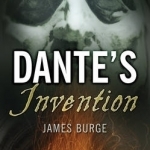
Dante's Invention
Book
Dante's Inferno is the story of a man who finds himself lost in a dark wood. His only hope of escape...

